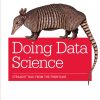Cambridge University Press Introduction to Software Testing 2nd Edition by Paul Ammann, Jeff Offutt 1107172012 9781107172012
$70.00 Original price was: $70.00.$35.00Current price is: $35.00.
Instant download Cambridge University Press Introduction to Software Testing 2nd Edition 1107172012 after payment
Cambridge University Press Introduction to Software Testing 2nd Edition by Paul Ammann, Jeff Offutt – Ebook PDF Instant Download/Delivery: 110717201,9781107172012
Full download Cambridge University Press Introduction to Software Testing 2nd Edition after payment

Product details:
ISBN 10: 1107172012
ISBN 13: 9781107172012
Author: Paul Ammann; Jeff Offutt
This extensively classroom-tested text takes an innovative approach to explaining software testing that defines it as the process of applying a few precise, general-purpose criteria to a structure or model of the software. The book incorporates cutting-edge developments, including techniques to test modern types of software such as OO, web applications, and embedded software. This revised second edition significantly expands coverage of the basics, thoroughly discussing test automaton frameworks, and it adds new, improved examples and numerous exercises. The theory of coverage criteria is carefully and cleanly explained to help students understand concepts before delving into practical applications, while extensive use of the JUnit test framework gives students practical experience in a test framework popular in the industry. Exercises, meanwhile, feature specifically tailored tools that allow students to check their own work. The book’s website also offers an instructor’s manual, PowerPoint slides, testing tools for students, and example software programs in Java.
Cambridge University Press Introduction to Software Testing 2nd Table of contents:
Part 1 Foundations
1 Why Do We Test Software?
1.1 When Software Goes Bad
1.2 Goals of Testing Software
1.3 Bibliographic Notes
2 Model-Driven Test Design
2.1 Software Testing Foundations
2.2 Software Testing Activities
2.3 Testing Levels Based on Software Activity
2.4 Coverage Criteria
2.5 Model-Driven Test Design
2.5.1 Test Design
2.5.2 Test Automation
2.5.3 Test Execution
2.5.4 Test Evaluation
2.5.5 Test Personnel and Abstraction
2.6 Why MDTD Matters
2.7 Bibliographic Notes
3 Test Automation
3.1 Software Testability
3.2 Components of a Test Case
3.3 A Test Automation Framework
3.3.1 The JUnit Test Framework
3.3.2 Data-Driven Tests
3.3.3 Adding Parameters to Unit Tests
3.3.4 JUnit from the Command Line
3.4 Beyond Test Automation
3.5 Bibliographic Notes
4 Putting Testing First
4.1 Taming the Cost-of-Change Curve
4.1.1 Is the Curve Really Tamed?
4.2 The Test Harness as Guardian
4.2.1 Continuous Integration
4.2.2 System Tests in Agile Methods
4.2.3 Adding Tests to Legacy Systems
4.2.4 Weaknesses in Agile Methods for Testing
4.3 Bibliographic Notes
5 Criteria-Based Test Design
5.1 Coverage Criteria Defined
5.2 Infeasibility and Subsumption
5.3 Advantages of Using Coverage Criteria
5.4 Next Up
5.5 Bibliographic Notes
Part 2 Coverage Criteria
6 Input Space Partitioning
6.1 Input Domain Modeling
6.1.1 Interface-Based Input Domain Modeling
6.1.2 Functionality-Based Input Domain Modeling
6.1.3 Designing Characteristics
6.1.4 Choosing Blocks and Values
6.1.5 Checking the Input Domain Model
6.2 Combination Strategies Criteria
6.3 Handling Constraints Among Characteristics
6.4 Extended Example: Deriving an IDM from JavaDoc
6.4.1 Tasks in Designing IDM-Based Tests
6.4.2 Designing IDM-Based Tests for Iterator
6.5 Bibliographic Notes
7 Graph Coverage
7.1 Overview
7.2 Graph Coverage Criteria
7.2.1 Structural Coverage Criteria
7.2.2 Touring, Sidetrips, and Detours
7.2.3 Data Flow Criteria
7.2.4 Subsumption Relationships Among Graph Coverage Criteria
7.3 Graph Coverage for Source Code
7.3.1 Structural Graph Coverage for Source Code
7.3.2 Data Flow Graph Coverage for Source Code
7.4 Graph Coverage for Design Elements
7.4.1 Structural Graph Coverage for Design Elements
7.4.2 Data Flow Graph Coverage for Design Elements
7.5 Graph Coverage for Specifications
7.5.1 Testing Sequencing Constraints
7.5.2 Testing State Behavior of Software
7.6 Graph Coverage for Use Cases
7.6.1 Use Case Scenarios
7.7 Bibliographic Notes
8 Logic Coverage
8.1 Semantic Logic Coverage Criteria (Active)
8.1.1 Simple Logic Expression Coverage Criteria
8.1.2 Active Clause Coverage
8.1.3 Inactive Clause Coverage
8.1.4 Infeasibility and Subsumption
8.1.5 Making a Clause Determine a Predicate
8.1.6 Finding Satisfying Values
8.2 Syntactic Logic Coverage Criteria (DNF)
8.2.1 Implicant Coverage
8.2.2 Minimal DNF
8.2.3 The MUMCUT Coverage Criterion
8.2.4 Karnaugh Maps
8.3 Structural Logic Coverage of Programs
8.3.1 Satisfying Predicate Coverage
8.3.2 Satisfying Clause Coverage
8.3.3 Satisfying Active Clause Coverage
8.3.4 Predicate Transformation Issues
8.3.5 Side Effects in Predicates
8.4 Specification-Based Logic Coverage
8.5 Logic Coverage of Finite State Machines
8.6 Bibliographic Notes
9 Syntax-Based Testing
9.1 Syntax-Based Coverage Criteria
9.1.1 Grammar-Based Coverage Criteria
9.1.2 Mutation Testing
9.2 Program-Based Grammars
9.2.1 BNF Grammars for Compilers
9.2.2 Program-Based Mutation
9.3 Integration and Object-Oriented Testing
9.3.1 BNF Integration Testing
9.3.2 Integration Mutation
9.4 Specification-Based Grammars
9.4.1 BNF Grammars
9.4.2 Specification-Based Mutation
9.5 Input Space Grammars
9.5.1 BNF Grammars
9.5.2 Mutating Input Grammars
9.6 Bibliographic Notes
Part 3 Testing in Practice
10 Managing the Test Process
10.1 Overview
10.2 Requirements Analysis and Specification
10.3 System and Software Design
10.4 Intermediate Design
10.5 Detailed Design
10.6 Implementation
10.7 Integration
10.8 System Deployment
10.9 Operation and Maintenance
10.10 Implementing the Test Process
10.11 Bibliographic Notes
11 Writing Test Plans
11.1 Level Test Plan Example Template
11.2 Bibliographic Notes
12 Test Implementation
12.1 Integration Order
12.2 Test Doubles
12.2.1 Stubs and Mocks: Variations of Test Doubles
12.2.2 Using Test Doubles to Replace Components
12.3 Bibliographic Notes
13 Regression Testing for Evolving Software
13.1 Bibliographic Notes
14 Writing Effective Test Oracles
14.1 What Should Be Checked?
14.2 Determining Correct Values
14.2.1 Specification-Based Direct Verification of Outputs
14.2.2 Redundant Computations
14.2.3 Consistency Checks
14.2.4 Metamorphic Testing
14.3 Bibliographic Notes
People also search for Cambridge University Press Introduction to Software Testing 2nd:
a gentle introduction to optimization cambridge university press 2014
introduction to electrodynamics 4th edition cambridge university press
flood gavin. an introduction to hinduism. cambridge university press 1996
introduction to information retrieval. cambridge university press


